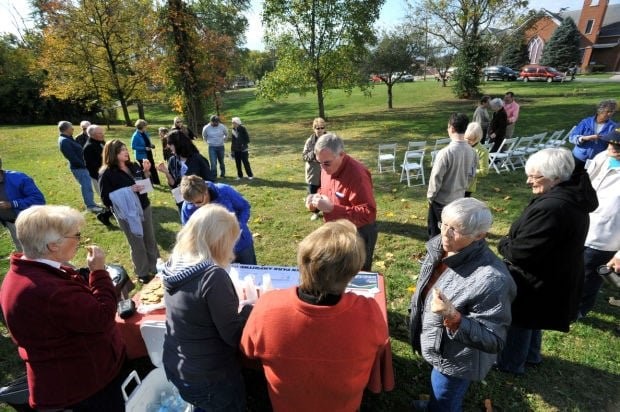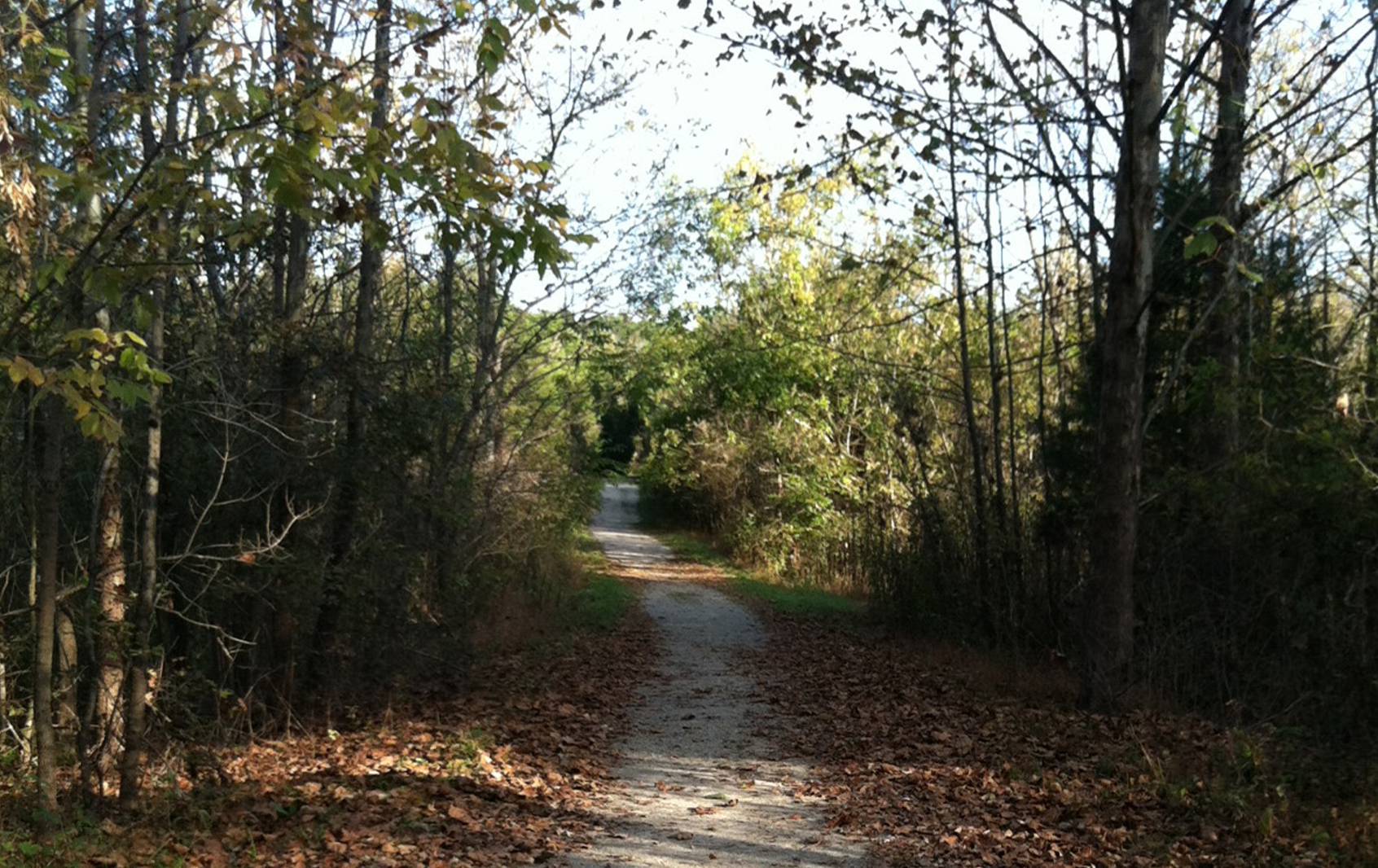Publication | Beyond a Path 1: Trails as Resource Connections in Your Community
Publication | Beyond a Path 1: Trails as Resource Connections in Your Community

WHAT IS A TRAIL?
A trail is a linear path segment that is naturally or intentionally created by users (humans and/or animals) to traverse their landscape and connect destinations. As a collective, a trail system is comprised of multiple paths that are connected in an overall network that may include paths exclusively in towns or in nature, but also connect one place to another place. Effectively laid out trails can fulfill multiple goals and objectives and also have significant indirect benefits for communities. Depending on the form or function, there are different types of trails to be considered (Table 1). Trail systems can include a mixture of different types of trails such as hiking, biking, horseback riding, or water trails.
Table 1. Conceptualization of Trails
PHYSICALLY CONNECTED TRAILS:
Recreational Trails
Physical Characteristics
Physically marked and connected points of interest
Primary Travel Modes
Foot, Bike, Horseback
Examples
Sheltowee Trace, Daniel Boone National Forest, Eastern Kentucky
Complete Streets
Physical Characteristics
Physically connected points but may not be marked
Primary Travel Modes
Foot, Bike
Examples
Legacy Trail, Lexington-Fayette County to Scott County, Kentucky
CONCEPTUALLY CONNECTED TRAILS:
Tourism Trail, Heritage Trail
Physical Characteristics
No physical connection, only perceived connection
Primary Travel Modes
Car, Bike
Examples
Bourbon Trail, Central Kentucky: Bullitt County to Fayette County
Some community design strategies incorporate trails in transportation, planning, or environmental sustainability projects to increase pedestrian activities, support alternative travel modes, and enhance ecosystem health. As an example, Complete Streets is a concept that includes features to address a range of different travel modes such as pedestrians, cyclists, and drivers, in a safe and convenient way (Smart Growth America, National Complete Street Coalition, n.d.). Similarly, a greenway is a travel corridor that includes trails not only for humans but also routes for wildlife species. Greenways may include larger stretches of natural features such as rivers, woodlands, and openspace; however, certain trails within greenways may be restricted or limited to human access (Nicholls & Crompton, 2005). Trails may come in different shapes and sizes but overall they can serve many roles in improving a community’s physical environment.
WHY CREATE A TRAIL?
The development of a trail system can help a community improve recreational, travel and health assets and generate revenue. Trail systems or greenways can indirectly have positive effects on adjacent property values (Corning, Mowatt & Chancellor, 2012; Linsey et al., 2004; Nicholls & Crompton, 2005) and potentially boost economic activities within close proximity. Well developed trails support conservation efforts for wildlife habitat or agricultural land use while also connecting points of interest. Therefore, trails can provide many direct and indirect environmental, social, and economic benefits for communities to strengthen the health of their environment and longer term sustainability (Corning, Mowatt & Chancellor, 2012).
The trail development process requires community members to work together to generate the most support for the project. When done well, the planning process provides opportunities for meaningful interaction and strengthens civic engagement. Communities can share visions and build their community capacity with opportunities for social interaction as they work toward common goals (Table 2).
Table 2. Typical Goals and Objectives of Trail Projects
GOALS
- Connect destinations effectively
- Provide alternative transportation opportunities (besides cars)
- Increase recreational activities
- Enhance community health
- Generate economic activities
OBJECTIVES
- Introduce bicycle lanes/paths
- Establish local/regional trail networks
- Promote healthier lifestyles
- Become travel destinations
OUTCOMES
- Reduced road congestion
- Safer pedestrian travel
- Improved fitness of trail users
- Increased recreation options
- Increased property value
- Increased visitors in town
Trails can address a wide range of goals and objectives for individuals and communities from local to regional levels. The development of pleasant, safe and effective trails encourages individuals to use trails for recreation, healthier lifestyles, commuting and other everyday activities. Well thought out and planned trails also enhance the built environment. Ideally, trails will physically start and end at locations and destinations that users frequent and lead to the overall enrichment of a community.
Communities can benefit from trails themselves but also from the process of working in partnership. Benefits may range from recreation and physical fitness to place attachment among others (Corning, Mowatt & Chancellor, 2012) (Table 3).
Table 3. Benefits and Challenges of Trail Projects
PRODUCT
Benefits
- Connect destinations
- Direct/indirect economic performance
- Physical enhancement of the built environment
- Alternative travel mode
- Recreational/leisure opportunities
Challenges
- Disconnect between segments
- Coherent aesthetics
- Quality control
- Management of project
PROCESS
Benefits
- Building relationships through collaboration, and cooperation
- Social capacity building
- Seek new partners and resources
- Consensus building
Challenges
- Timely implementation
- Conflict resolution
- Reaching consensus
- Acquiring property
- Obtaining funding for project
On the other hand, communities sometimes experience challenges and limitations while working on trail projects. Often, potential community trail routes cut across multiple property boundaries; thus, collaboration is essential to create a continuous path that is not disruptive. Projects may also encounter some resistance where persuasion is needed to encourage property owners to participate in the planning process and help secure access or easements. Furthermore, even after arrangements are agreed upon during the physical planning and design process, the involved partners, leaders, and stakeholders need to continue coordination among themselves as well as with other outside partners depending on the type of trail, context of the project, or other environmental compliance requirements.
While trail creation has its challenges, the economic, social and environmental benefits often outweigh the costs. If you think your community is interested in designing a trail or trail system, please refer to Beyond a Path 2: Trail Planning and Trailblazers: Two Case Studies for Community Trails before contacting the author with further inquiries.
REFERENCES
Corning, S., Mowatt, R., and Chancellor, C. H. (2012). “Multiuse Trails: Benefits and Concerns of Residents and Property Owners.” Journal of Urban Planning and Development, 138(4), 277–285.
Lindsey, G., Man, J., Payton, S., and Dickson, K. (2004). “Property Values, Recreation Values, and Urban Greenways.” Journal of Park and Recreation Administration 22(3), 69-90.
Nicholls, S. and Crompton, J.L. (2005). “The Impact of Greenways on Property Values: Evidence from Austin, Texas.” Journal of Leisure Research 37(3), 321-341.
Smart Growth America, National Complete Street Coalition. (n.d.). “Implementing Complete Streets: SUstainable Complete Streets.” Retrieved from http://www.smartgrowthamerica.org/complete-streets/implementation/factsheets/green-streets/


